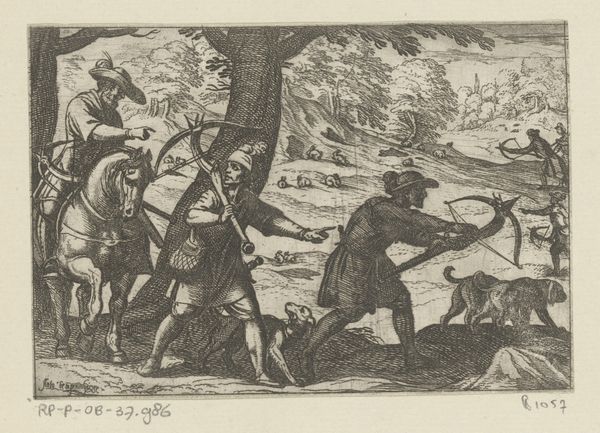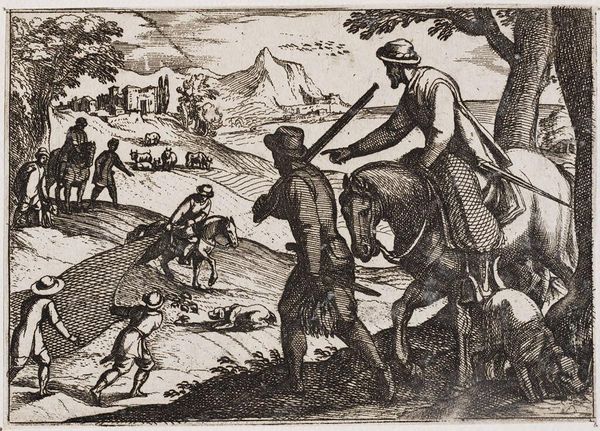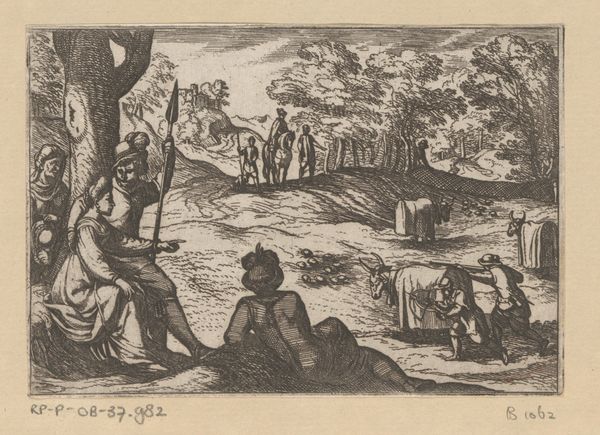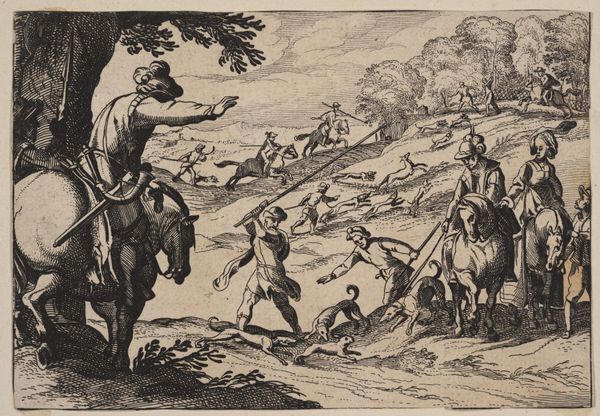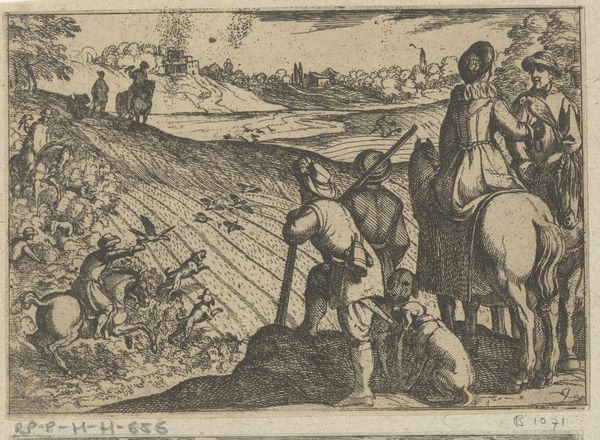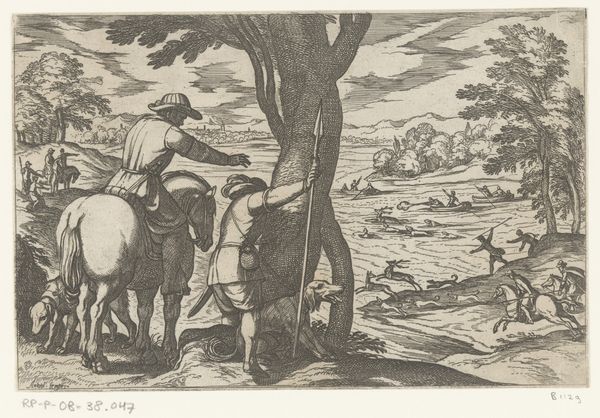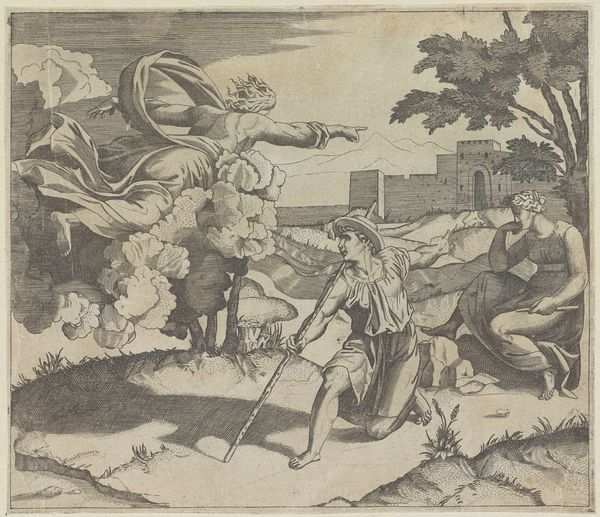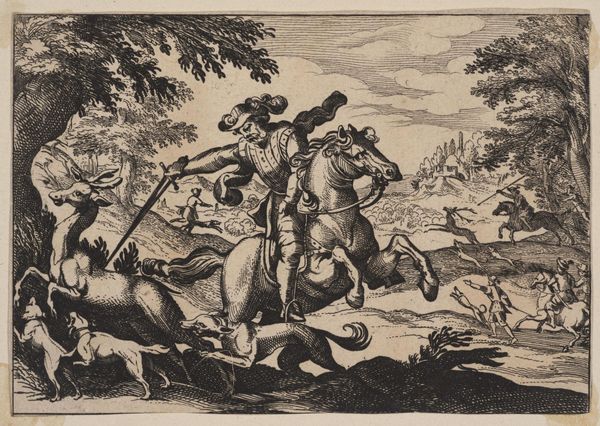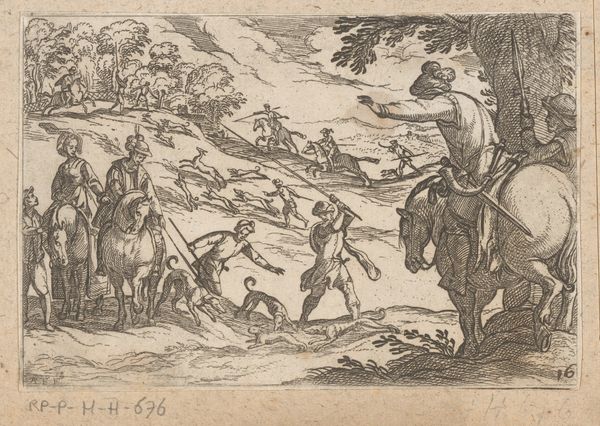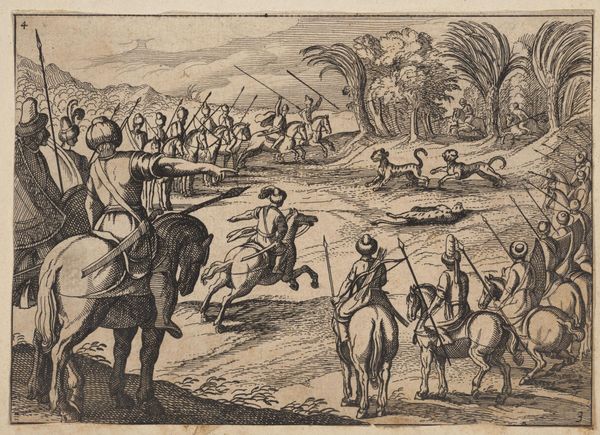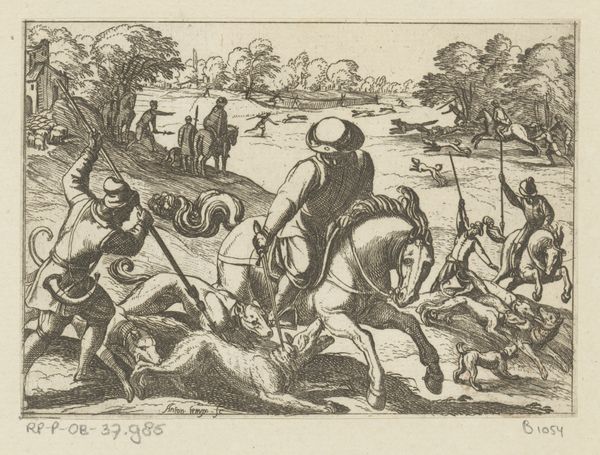
print, engraving
#
narrative-art
# print
#
landscape
#
figuration
#
genre-painting
#
italian-renaissance
#
engraving
Dimensions: height 101 mm, width 140 mm
Copyright: Rijks Museum: Open Domain
Curator: This is Antonio Tempesta's "Jagers vangen vogels met netten," an engraving dating back to 1598, currently residing here at the Rijksmuseum. Editor: The immediate feeling I get is one of organised chaos! There’s so much activity crammed into this small space, almost frantic, with figures scattering across the landscape. Curator: Precisely! And understanding that “organised chaos” involves examining the social role of hunting in the late 16th century. This print likely circulated amongst elite circles, displaying leisure activities. The figures, the landscape, everything is part of a larger representation of societal norms. It portrays hierarchies between the hunter, prey and even livestock present. Editor: I see that too. Considering the themes present here: figuration, landscape, and even touches of genre painting…how do you see it intersects with broader contemporary narratives around humans and nature? There's something disturbing in the ease with which these animals are being captured for entertainment. Curator: The historical context shows this wasn’t just entertainment; the hunt was deeply enmeshed within systems of power and property. Only specific demographics had the ability to indulge and gain access within hunting practices which shaped social dynamics. Even now the debates surrounding sustainability, ownership and conservation have shifted ethical conversations. Editor: You’re right, it triggers current discourse around humans dominating nature. It’s difficult to separate my 21st-century consciousness from this 16th-century image. This artwork then highlights the long-standing problematic relationship and its social reflection within past events. Curator: This intersection helps contextualise not only artistic output from prior times but social issues that persist to this day, thus contributing to contemporary social, philosophical conversations in a public context. Editor: So, it's more than just looking at an image, but confronting how society constructs meaning. This artwork truly speaks across time in challenging and interesting ways. Curator: Absolutely, it provides valuable insight into how different systems operated back then and can challenge normative ethics and power relationships, that need to evolve over time.
Comments
No comments
Be the first to comment and join the conversation on the ultimate creative platform.
